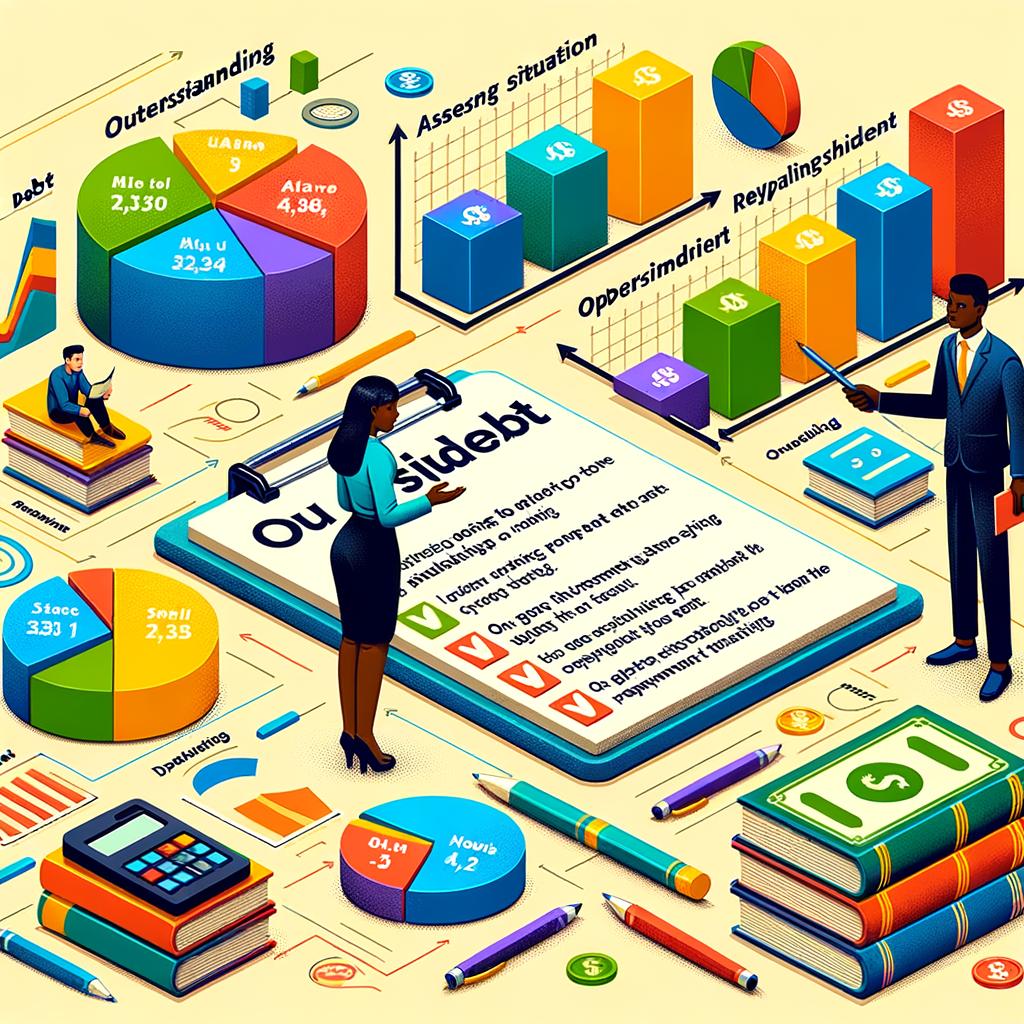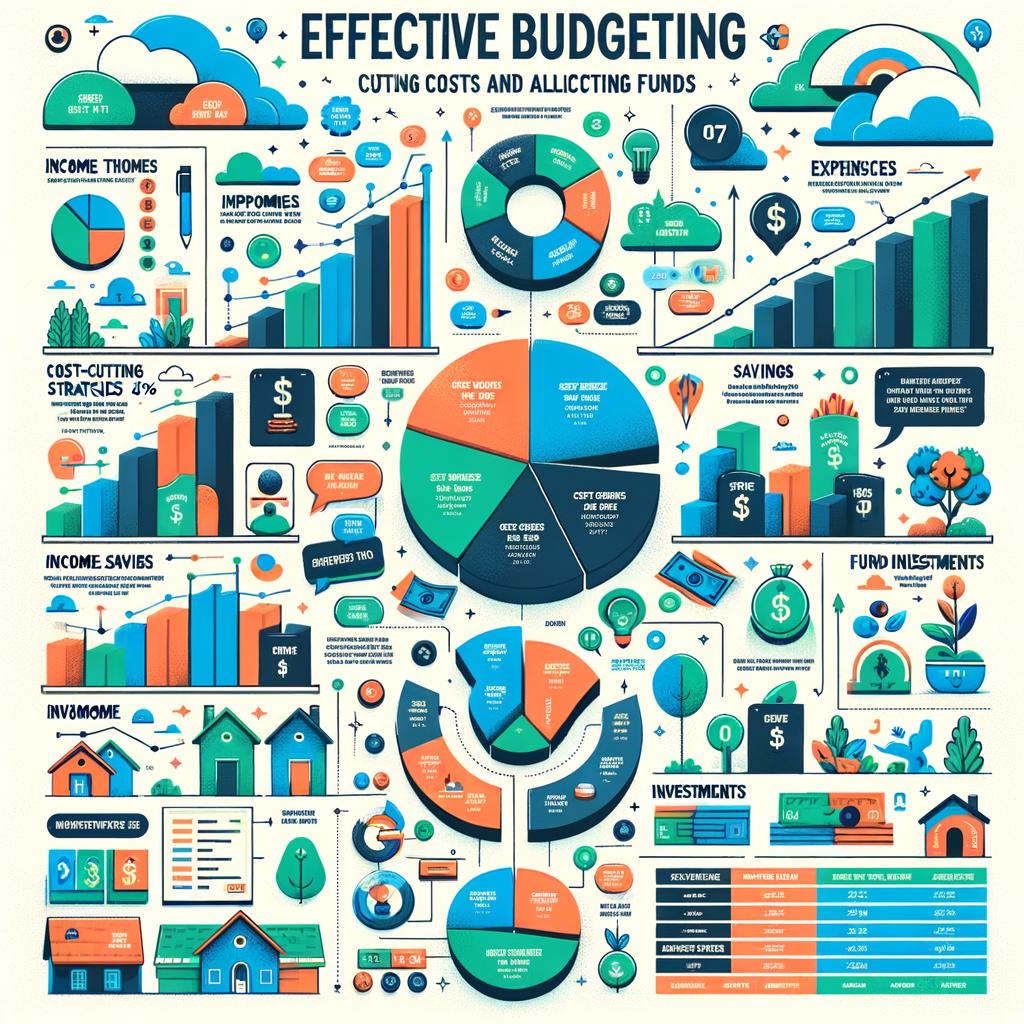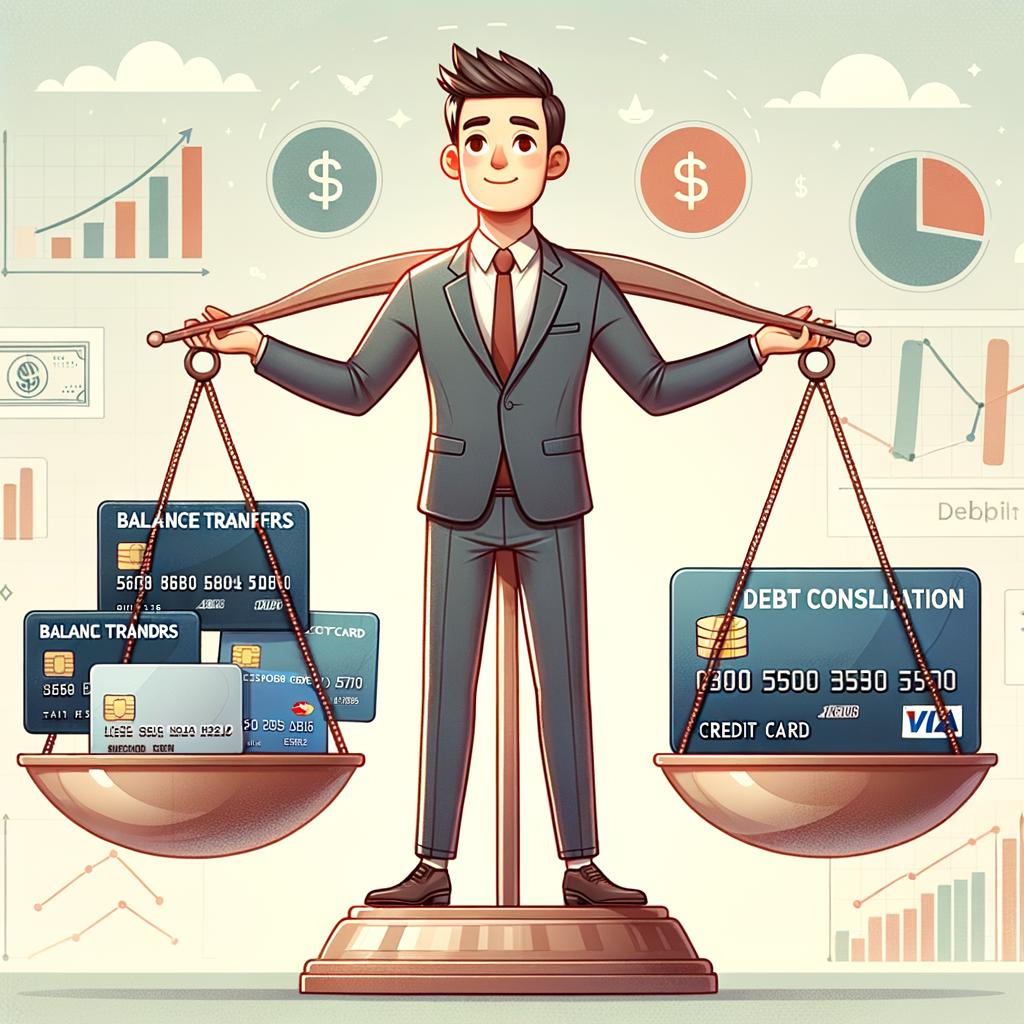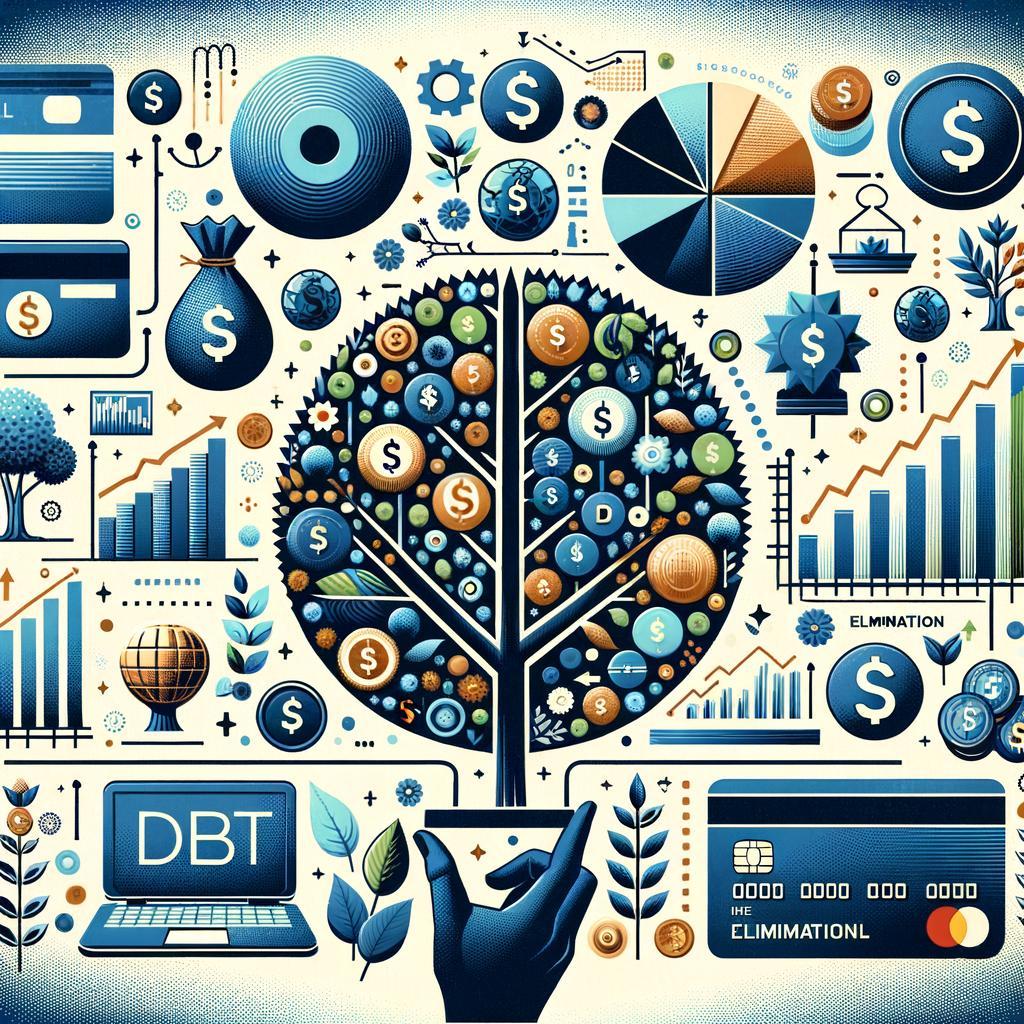Picture this: A towering mountain of envelopes, each one a silent testament to your spending adventures—from that emergency car repair last winter to those irresistible sales just a few months ago. Credit card debt can feel like an overwhelming summit, daring you to reach the peak. But what if we told you that this daunting climb is not only achievable but also manageable with a clear route and the right tools? Welcome to your guide on “How To Pay Off Credit Card Debt,” where we unravel the mystery of tackling that financial mountain, one step at a time. Whether you’re peering anxiously at your first bill or staring down a collection of statements, we’re here to illuminate the path to financial freedom, empowering you to regain control and breathe easy once more.
Table of Contents
- Understanding Your Debt: Assessing the Situation
- Crafting a Personalized Repayment Strategy
- Effective Budgeting: Cutting Costs and Allocating Funds
- Leveraging Balance Transfers and Debt Consolidation
- Q&A
- Future Outlook

Understanding Your Debt: Assessing the Situation
When tackling credit card debt, the first step is acknowledging the amount owed. Gather all your credit card statements and create a comprehensive list of balances. Note the interest rates and minimum payments for each card. Understanding the full picture is imperative to formulating an effective repayment plan.
Next, categorize your debts. This could be by:
- Balancing amounts: From the smallest to the largest.
- Interest rates: From the highest to the lowest.
Different strategies work for different people, and the approach you choose can make a significant difference. Two popular methods are the snowball and avalanche methods. The snowball method focuses on paying off the smallest balance first to build momentum and motivation. In contrast, the avalanche method targets the highest interest rate debt first, aiming to save money on interest over time.
To better assess which strategy might work for you, consider the following:
| Method | Focus | Best For |
|---|---|---|
| Snowball | Smallest balance first | Quick wins, motivation |
| Avalanche | Highest interest rate first | Reducing interest, long-term savings |
It’s also beneficial to review your spending habits. Analyze your monthly expenses to identify areas where you can cut back. Redirect these saved funds to your debt repayment. Even small changes can accumulate significantly over time. Services like subscription audits or budgeting apps can help spotlight unnecessary expenditures.
Another crucial aspect is considering if you can increase your income. This might be through taking up a side hustle, freelancing, or asking for a raise at your current job. The additional income can substantially accelerate your debt repayment process.
Consider consolidating your debt into one loan with a lower interest rate. This can simplify your payments and potentially lower the overall amount you owe. However, be cautious of the terms and ensure this move will benefit your financial situation in the long run.
reach out to your credit card issuers. They might offer hardship programs or be willing to negotiate lower interest rates temporarily. These small steps, coupled with a strategic plan, can set you on a clearer path to becoming debt-free.
Taking a holistic view of your debt situation, and designing a personalized approach, is crucial for effective debt management. Determine what adjustments are most feasible for your lifestyle, and stay committed to your plan. Consistency and perseverance will lead you to financial freedom.

Crafting a Personalized Repayment Strategy
Each person’s journey to financial freedom is unique, and what works for one might not work for another. Therefore, crafting a payment strategy that suits your needs and lifestyle is crucial to successfully pay off your credit card debt. Here are several approaches you can take:
- Debt Avalanche: Focus on paying off credit cards with the highest interest rates first while making minimum payments on the rest. This method saves you money on interest over time.
- Debt Snowball: Begin by paying off the smallest debts first, to build momentum and gain emotional satisfaction. Once a card is paid off, roll that payment into the next smallest debt.
- Balance Transfer: Transfer your high-interest credit card balance to a card with a lower interest rate or a 0% introductory APR offer. Be sure to understand the transfer fees and terms.
- Debt Consolidation Loan: Consolidate multiple credit card debts into a single loan with a fixed rate and term, possibly lowering your interest rate and simplifying your payments.
- Biweekly Payments: Splitting your monthly payment and paying every two weeks can reduce interest and shorten your payoff time, as you make an extra payment each year.
To determine which method suits you best, consider factors such as your current interest rates, debt amounts, emotional preferences, and cash flow. Combining methods can also be effective; for instance, starting with the debt snowball to gain initial momentum, then switching to the debt avalanche to save on interest.
| Method | Pros | Cons |
|---|---|---|
| Debt Avalanche | Reduces total interest paid. | May take longer to see early results. |
| Debt Snowball | Quick wins boost motivation. | May pay more in interest overall. |
| Balance Transfer | Lower interest rates reduce costs. | May include transfer fees. |
| Debt Consolidation | Simplifies payments. | Depends on credit score for good rates. |
| Biweekly Payments | Pay off debt faster with less interest. | Requires more frequent payments. |
It’s important to monitor your progress regularly and be ready to adapt your strategy as your situation changes. Setting up reminders or using financial apps can help you stay on track. Make sure to celebrate small victories along the way—the emotional payoff can be just as rewarding as the financial one.
Additionally, consider the emotional aspects of debt repayment. Choose a strategy that aligns with your personality. If you need frequent victories to stay motivated, the debt snowball might be your best bet. If you’re more analytical and driven by numbers, the debt avalanche could suit you better.
Remember, seeking professional financial advice can also provide personalized insights and strategies. A financial advisor can tailor recommendations specifically to your financial situation and long-term goals.
throughout this journey, be sure to cultivate healthy financial habits. Cut unnecessary expenses, increase your income if possible, and avoid accruing new debt. Building a solid budget and sticking to it can help you steer clear of future financial pitfalls.
Whether you choose the debt avalanche, debt snowball, or another method, the key is consistency and perseverance. With your tailored strategy in place, you’re well on your way to being debt-free.

Effective Budgeting: Cutting Costs and Allocating Funds
Budgeting effectively is the cornerstone of paying off credit card debt. Knowing where your money is going, cutting unnecessary expenses, and appropriately allocating your funds can make a significant difference.
Identify & Cut Unnecessary Expenses
Start by scrutinizing your monthly expenses. Track every penny to understand where your money is going. Look for areas where you can cut costs:
- Subscription Services: Cancel any unused or underutilized subscriptions.
- Dining Out: Limit eating out; cook more meals at home.
- Energy Consumption: Reduce your utility bills by using energy-efficient appliances.
- Transportation: Consider carpooling, public transport, or biking to work.
Create a Realistic Budget
After identifying your expenses, it’s time to create a budget. Make sure your budget covers all your essential needs first. Allocate your income in a way that gives you the maximum space for paying down your debt.
| Category | Monthly Allocation |
|---|---|
| Rent/Mortgage | $1,200 |
| Utilities | $200 |
| Food | $400 |
| Transportation | $150 |
| Debt Repayment | $500 |
Prioritize Debt Payments
Make debt repayment a priority. This means you should allocate a significant portion of your budget towards paying off your credit card debt. Consider the avalanche method (paying off the highest-interest debt first) or the snowball method (paying off the smallest debt first) for effective debt reduction.
Investigate Lower Interest Rates
High interest rates can dramatically increase your debt. Call your credit card company to negotiate lower interest rates. If successful, this can reduce your monthly payments and help you pay off the debt faster.
Use Windfalls Wisely
Any unexpected windfall, such as a tax refund, bonus, or gift, should be used to pay down your credit card debt instead of indulging in extra spending. These lump-sum payments can significantly reduce your principal balance and save you interest.
Consider Balance Transfer Offers
If you have a good credit score, transferring your existing high-interest debt to a card with a low or 0% introductory APR can be a strategic move. This offers you a period to pay off the principal without accruing interest, easing your financial load.
Monitor and Adjust Your Budget Regularly
Your budget is not a set-it-and-forget-it tool. You need to monitor your expenses and progress towards paying off your debt regularly. Adjust as needed to stay on track.
With focused efforts on budgeting and strategic allocation of your funds, you can work towards eliminating your credit card debt and gaining financial freedom.
Leveraging Balance Transfers and Debt Consolidation
In your journey to eliminate credit card debt, can be powerful allies. These financial strategies can significantly reduce the burden of high-interest rates, helping you pay off your debt more efficiently.
Balance transfers involve moving your outstanding credit card balance to a new credit card with a lower or even zero percent interest rate. Many credit card companies offer promotional rates for balance transfers to attract new customers. By transferring your balances, you can save on interest and potentially pay off your debt quicker.
Benefits of Balance Transfers:
- Lower Interest Rates: Save money by reducing the amount of interest you pay each month.
- Simplified Payments: Consolidate multiple credit card payments into one manageable payment.
- Potential for Faster Debt Repayment: More of your payment goes toward the principal balance rather than interest.
However, there are critical considerations to keep in mind. Not all balance transfer offers are created equal. Be sure to read the fine print for any fees associated with transferring your balance and note how long the promotional rate applies. Additionally, avoid adding new charges to the new card, as this can negate the benefits of the transfer.
Debt Consolidation, on the other hand, involves combining multiple debts into a single loan, often with a lower interest rate. This can be done through a personal loan or a debt consolidation loan. This approach can streamline the repayment process and sometimes lower your monthly payment.
Advantages of Debt Consolidation:
- Single Monthly Payment: Simplifies your financial obligations by consolidating multiple debts into one loan.
- Lower Interest Rates: Potentially qualify for a lower interest rate compared to high-interest credit cards.
- Improved Credit Score: Regular, on-time payments can positively impact your credit score over time.
| Option | Pros | Cons |
|---|---|---|
| Balance Transfers | Lower or zero interest rates, simplified payments | Fees, limited promotional period, risk of new charges |
| Debt Consolidation | Single payment, potentially lower interest rates | Credit score requirements, longer loan term |
Before pursuing these options, assess your overall financial situation and consider whether you can stick to a disciplined repayment plan. While both strategies can be effective, they require commitment and responsible financial behavior to avoid falling back into debt.
Each person’s financial situation is unique, and it’s wise to consult with a financial advisor or credit counselor to determine which approach best suits your needs. By carefully evaluating your options and taking informed steps, you can pave the way to a debt-free future.
Understanding the mechanisms and advantages of balance transfers and debt consolidation can empower you to take control of your finances and work towards a brighter, debt-free future. Happy planning!
Q&A
Q: What are the first steps I should take if I want to start paying off my credit card debt?
A: Start by taking a detailed inventory of your debts. List all your credit cards, balances, interest rates, and minimum payments. This provides a clear roadmap of your financial landscape. Next, establish a budget to gain control over your income and expenses. Knowing where your money is going can help you identify areas to cut back and redirect funds towards debt repayment.
Q: Is there a particular strategy that’s best for paying off credit card debt?
A: While there’s no one-size-fits-all answer, two popular strategies often come up: the Snowball Method and the Avalanche Method. The Snowball Method involves paying off your smallest debts first to build momentum, while the Avalanche Method prioritizes debts with the highest interest rates to save money on interest in the long run. Consider your personality and motivation style when choosing the strategy that works best for you.
Q: How can balance transfers help in paying off credit card debt?
A: Balance transfers can be a powerful tool if used wisely. By transferring high-interest debt to a card with a low or 0% introductory APR, you can reduce the amount of interest you pay over time. However, be mindful of balance transfer fees and the length of the introductory rate to ensure it’s a cost-effective choice.
Q: Can consolidating credit card debt be beneficial?
A: Yes, consolidating credit card debt through a personal loan or a debt consolidation loan can simplify your payments and potentially lower your interest rate. This can make it easier to manage and pay off your debt faster. However, it’s crucial to read the terms carefully and avoid accumulating new debt while paying off the consolidated loan.
Q: How important is creating a budget in the debt repayment process?
A: Creating a budget is fundamental. It helps you understand your financial situation, control your spending, and allocate funds towards debt repayment efficiently. A realistic budget keeps you accountable and ensures you’re making consistent progress towards becoming debt-free.
Q: Are there any lifestyle changes that can help me pay off my debt quicker?
A: Absolutely. Cutting non-essential expenses, such as dining out, subscription services, and impulse purchases, can free up additional funds for debt repayment. Additionally, finding ways to increase your income, such as side jobs or selling unused items, can expedite the process.
Q: Should I consider seeking professional help to manage my debt?
A: If you’re feeling overwhelmed, consulting a credit counselor or financial advisor can be beneficial. They can provide expert advice, help you create a customized debt management plan, and even negotiate with creditors on your behalf. Make sure to choose a reputable organization to avoid scams.
Q: How can I stay motivated during my debt repayment journey?
A: Staying motivated involves setting clear, achievable goals and celebrating your progress along the way. Break your debt repayment plan into smaller, manageable milestones and reward yourself for reaching each one. Tracking your progress visually, such as with a payoff chart, can also serve as a constant reminder of how far you’ve come.
Q: What should I do once I have paid off my credit card debt?
A: Congratulate yourself! Paying off your debt is a significant achievement. To maintain financial health, make it a habit to pay your full credit card balance each month, create an emergency fund to avoid future debt, and continue budgeting to stay on track with your financial goals.
Future Outlook
As you stand on the precipice of a debt-free future, remember that the journey to financial liberation is paved with discipline, strategy, and perseverance. By adopting a mindful approach to your spending habits, harnessing the power of budgeting, and leveraging available resources, you can conquer the mountain of credit card debt and reclaim control over your financial destiny. Keep your eyes on the horizon, where the warmth of financial freedom awaits, and take each step with confidence, knowing that every effort you make is an investment in a more secure and prosperous tomorrow. Your path to a debt-free life begins now, and with every step forward, the weight of debt will diminish, leaving you lighter, freer, and ready to embrace the future with open arms.
